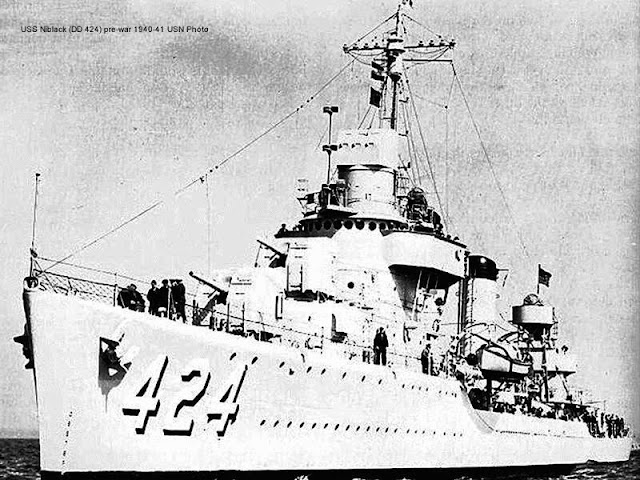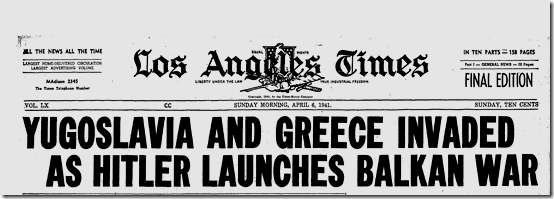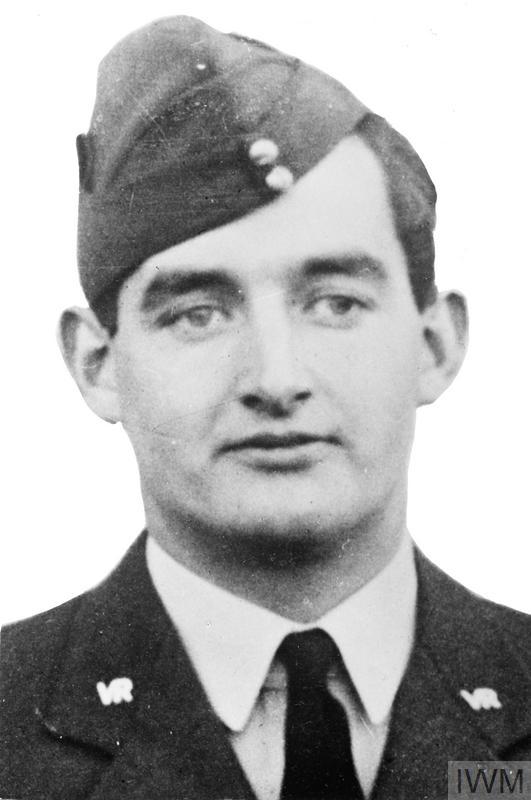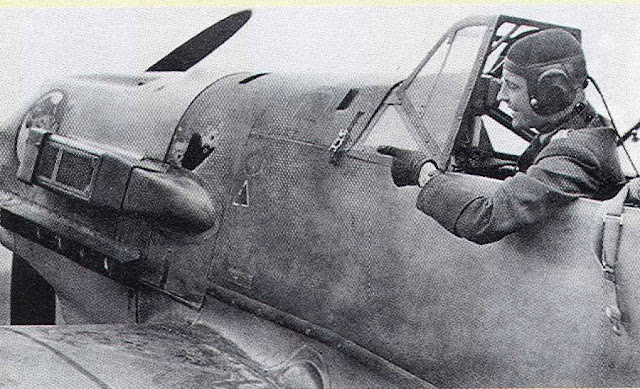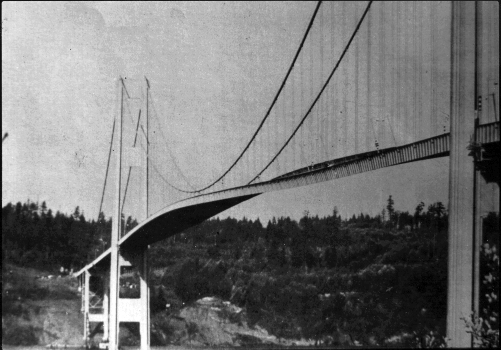Operation Marita/Operation 25: The Germans of the XL Panzer Corps continue to roll in Yugoslavia on 10 April 1941. By the morning, the Germans have regrouped and now are ready to advance south toward Kozani. Capturing Kozani would put the Wehrmacht troops in position to drive to the coast at Larissa or nearby, cutting off the British forces holding on the Aliakmon Line near Thessaloniki. However, there is a lot of rough terrains to cover, things are a little different now than in the drive west against light opposition.
The 1st SS Panzer Division Leibstandarte SS Adolf Hitler (LSSAH), under the command of Hitler's former chauffeur Josef "Sepp" Dietrich, captures Vevi in southern Macedonia and immediately turns to clear the enemy from the Kleisoura Pass southwest of Vevi. pass This leads to the town of Klidi in the south (it also is known as the Klidi Pass or Kirli Derven). The plan is to take Klidi and then drive downhill to Kastoria in northwest Greece.
SS-Sturmbannführer Kurt "Panzer" Meyer leads LSSAH's reinforced Aufklärungs-Abteilung (reconnaissance battalion) south into the pass, which is defended by scratch forces mixed Australian/New Zealand/Greek formation known as the "Mackay Force" under the Australian General Iven Mackay. Meyer's forces, backed by the 73rd Infantry Division, attack Glava Hill and Delinski Dol, but the Mackay Force is under orders from General Henry Maitland Wilson to "stop a blitzkrieg down the Florina Valley." Today, it does that, stopping the Germans cold.
In the north of Yugoslavia, the 14th Panzer Division of General von Kleist's 2nd Army takes Zagreb. Colonel Slavko Kvaternik of the Ustasa within the city declares an Independent State of Croatia (Nezavisna Drzava Hrvatska - NDH). Croatian fascist strongman Ante Pavelic returns from his exile in Italy to join in the proclamation, illustrating its Fascist orientation. This declaration of independence triggers an unexpected result, causing Hungary to decide that the Tripartite Pace to which both it and Yugoslavia are signatories no longer bars it from invading the now-dismembered country. Hungary prepares to send its tanks across the border tomorrow, the 11th.
Meanwhile, local Communist Party Secretary-General Josep Broz "Tito" (Tito is one of his assumed names taken when the Communist Party in Yugoslavia is outlawed) forms a Military Committee.
To the southeast in Greece, the battle of the Metaxas Line is over. The Greek commander of the Eastern Macedonian Army Section, Lieutenant General Konstantinos Bakopoulos, has ordered the forces holding out behind German lines to surrender. As of yet, the Germans at Thessaloniki and the British on the other side of the Aliakmon River have not engaged in any battles aside from a minor encounter between a German patrol and defending New Zealanders. Both sides took minor casualties, relatively speaking, during the battle, the Germans about 500 men killed.
The German government grows sensitive about the image it is projecting by bombing Belgrade in Operation Punishment. It ends the bombings, and the Ministry of Propaganda warns the media to "omit" sensational comments such as "its streets are covered with corpses of women and children." In fact, Luftflotte IV stops bombing northern Yugoslavia altogether - it hasn't bombed any Croatian areas at all - and turns its attention solely to southern Yugoslavia and Greece.
The Royal Hellenic Navy loses patrol boat A-2 to unknown causes. Axis troops seize Yugoslavian minesweeper Kobac at Sebenico.
Convoy AG 12 departs from Alexandria bound for Phaleron Bay. Previous convoys have gone to nearby Piraeus, which is the ordinary modern port for Athens, but German bombing temporarily has put the port out of commission. Convoy AS 25 (five Greek ships) departs from Piraeus.
British 3791-ton troopship HMS Ulster Prince, part of Convoy AC 3 which departed from Alexandria bound for Tobruk on the 6th, returns to Alexandria and grounds in Great Pass as it enters. It suffers minor damage.
Reichsmarschall Hermann Goering about antiaircraft defenses, then departs from his Fruhlingssturm headquarters south of Vienna to oversee Operation 25/Operation Marita. While he just as easily could review the operations from Berlin, Hitler likes to give the appearance of being at the front with his troops.
The Luftwaffe attacks Birmingham on the night of 10/11 April, with 206 bombers dropping 246 tons of high explosives and 1183 incendiaries. After dark, it attacks Coventry again. Overall, about 475 people are killed and 700 seriously wounded in the two Coventry raids of two nights earlier and tonight.
East African Campaign: The British now hold the key points in Italian Somaliland, Eritrea, and Abyssinia. However, many Italian strongholds remain in far-flung places. The British 11th African Division advances southwest from Addis Ababa to attack one of them, Jimma. They have to halt at Abaiti on the Omo River, where the Italians have blown the bridges.
At Assab, Eritrea, the Italians watch British troops approach and do what Italians in other ports have done in that situation: they start scuttling their ships:
Battle of the Atlantic: U-52 (Kptlt. Helmut Möhlmann) torpedoes 6563-ton Dutch freighter Saleier east of Greenland. The ship goes down extremely quickly, in a matter of seconds, but all 63 men on board survive pickup by the destroyer USS Niblack - unusual for a ship sinking so fast and during the colder months so far north. Saleier had been dispersed from Convoy OB 306. The Niblack, which is on its way to Iceland and nearby strictly by chance - then unsuccessfully attacks an (apparently false) submarine contact by dropping three depth charges. This apparently is the first US naval combat involvement in the Battle of the Atlantic - though nobody on the German side is aware of it and nothing comes of it, and thus it passes virtually unnoticed by anyone. But it most definitely is the first US combat incident of World War II, and shows just how close the US is coming to open conflict.
The Luftwaffe attacks shipping in the Tyne. A bomb strikes Royal Navy light cruiser HMS Naiad, already under repair, and damages it slightly some more.
The Luftwaffe bombs and damages 4887-ton British freighter Thirlby about 140 miles northwest of the Butt of Lewis. It is brought in to Loch Ewe in tow.
The Luftwaffe bombs and damages 943-ton British freighter Busiris off Runnel Stone in Mount's Bay, Cornwall.
The Luftwaffe bombs and damages 397-ton Dutch freighter Virgo five miles northwest of Bar Light Vessel. It is towed to Liverpool.
The Admiralty, happy that the RAF damaged German heavy cruiser Gneisenau in Brest over the night with four bomb hits, transfers six of its submarines to the Mediterranean.
British Convoy DS 1 departs from Scapa Flow, the first of the DS convoys. It is composed of two troopships and two escorts, bound for Reykjavik. Return convoys are SD convoys.
Convoys T-10 and HX 120 depart from Halifax. Convoy TC-10 is a two-transport Canadian troop convoy that is escorted the entire way by battleship HMS Rodney and other ships as well.
U-401 (Kapitänleutnant Gero Zimmermann) and U-565 (Oberleutnant zur See Johann Jebsen) are commissioned.
Rommel orders the Italian Brescia Division forward from Mechili to take over for Schwerin's force. He also orders the Ariete Division forward toward El Adem. Due to all these troop movements, today is often cited as the start of the siege of Tobruk. The port city is defended by the 9th Australian Division, with overall command under General Morshead. The British strengthen their defenses at Halfaya Pass to the south by bringing up the 22nd Guards Brigade.
Moving his headquarters forward to Gazala airfield, Rommel's biggest problem is one of supply. Some detachments have run out of food and water.
The Royal Navy sends off four destroyers from Suda Bay to be based in Malta. The purpose is to interdict Axis supply convoys operating between Naples and Tripoli. Rommel's advances on land, the British believe, can be stopped - at sea.
Royal Navy minesweeper HMS Abingdon is damaged by mines at Malta. Repairs will take until June. It is the second ship damaged or sunk by mines there recently.
Royal Navy gunboats HMS Aphis and Gnat bombard German positions at Gazala and Bomba.
An Italian convoy of four ships (Bosforo, Ogaden, Persiano, and Superga) departs from Palermo, Sicily for the final leg of its trip from Naples to Tripoli. Another convoy arrives at Tripoli.
The War Office transfers Special Service troops from Malta back to Alexandria. They have been among the troops guarding Gozo Island pursuant to Operation Picnic.
Anglo/Irish Relations: Visiting Australian Prime Minister Robert Menzies is an advocate of less rigid English relations with Ireland. He has prepared a memo on the matter, and Prime Minister Winston Churchill finds it "very readable." Menzies continues in his diary:
Anglo/US Relations: President Roosevelt authorizes the transfer of ten Coast Guard cutters to the Royal Navy. The British will work up the cutters in Long Island Sound through the end of May.
Anglo/Turkish Relations: President Inonu once again declines to join the Allies.
US/Polish Relations: Having met with President Roosevelt, General Sikorski concludes his brief visit to the United States and returns to England.
Japanese Military: The Imperial Japanese Navy forms the First Air Fleet, composed of all seven of its aircraft carriers. Altogether, they can launch 474 aircraft. The carriers are arranged as follows:
US Military: Admiral John Newton brings his fleet back into Pearl Harbor, concluding its "goodwill" missions to Australia and Fiji.
Japanese Government: War hawks Musatsume Ogura, Admiral Teijiro Toyoda, and Lieutenant General Teiichi Suzuki join the cabinet. Admiral Osami Nagano becomes the new chief of the Naval Staff, replacing Prince Hiroyasu Fushimi, who has resigned (but technically remains in the cabinet). Seiichi Ito becomes the new chief of staff of the Imperial Combined Fleet.
Iraq: The British at Habbaniyah Airfield outside Baghdad are getting increasingly nervous about the new government of Rashid Ali. While there haven't been any attacks on the base yet, the Ali government is distinctly anti-British and pro-German. The British War Cabinet authorizes troop transfers from General Claude Auchinleck's command in India to Iraq.
In Berlin, meanwhile, Reichsmarschall Hermann Goering has his eye on Iraq as well. The country fits into the, shall we say, larger war aims of the Third Reich. However, it is far away over air space largely controlled by the British, so even getting airplanes to it is a chore. Goering believes that supporting the Ali government with his Luftwaffe would increase his own prestige within the hierarchy - which of course he is almost at the top of already, but there is a lot of infighting that he worries about nonetheless - so he is thinking of sending some units there. The main problem is that there is no ground support for Luftwaffe planes in Iraq because it is all controlled by the British, so capturing the RAF facilities is somewhat of a prerequisite to Luftwaffe operations. However, the facilities likely can't be captured without the Luftwaffe's assistance.
American Homefront: The Anthony and William Esposito trial begins in New York City. They are accused of the 14 January 1941 killing of a police officer and a holdup victim. The case receives a lot of media attention because the incident happened near the Empire State Building and a visiting photographer was on the scene to snap some pictures right after it happened. The Esposito brothers enter an insanity plea and exhibit odd "insane" conduct in the courtroom.
Hooverville, in Seattle's Pioneer Square, burns down today. A Depression-era shantytown begun about 1931, its burning causes the Seattle Port Commission to condemn all shacks and other rudimentary habitations in the area.
April 1941
April 1, 1941: Rommel Takes Brega
April 2, 1941:Rommel Takes Agedabia
April 3, 1941: Convoy SC-26 Destruction
April 4, 1941: Rommel Takes Benghazi
April 5, 1941: Rommel Rolling
April 6, 1941: Operation Marita
April 7, 1941: Rommel Takes Derna
April 8, 1941: Yugoslavia Crumbling
April 9, 1941: Thessaloniki Falls
April 10, 1941: USS Niblack Attacks
April 11, 1941: Good Friday Raid
April 12, 1941: Belgrade and Bardia Fall
April 13, 1941: Soviet-Japanese Pact
April 14, 1941: King Peter Leaves
April 15, 1941: Flying Tigers
April 16, 1941: Battle of Platamon
April 17, 1941: Yugoslavia Gone
April 18, 1941: Me 262 First Flight
April 19, 1941: London Smashed
April 20, 1941: Hitler's Best Birthday
April 21, 1941: Greek Army Surrenders
April 22, 1941: Pancevo Massacre
April 23, 1941: CAM Ships
April 24, 1941: Battle of Thermopylae
April 25, 1941: Operation Demon
April 26, 1941: Operation Hannibal
April 27, 1941: Athens Falls
April 28, 1941: Hitler Firm about Barbarossa
April 29, 1941: Mainland Greece Falls
April 30, 1941: Rommel Attacks
2020
The 1st SS Panzer Division Leibstandarte SS Adolf Hitler (LSSAH), under the command of Hitler's former chauffeur Josef "Sepp" Dietrich, captures Vevi in southern Macedonia and immediately turns to clear the enemy from the Kleisoura Pass southwest of Vevi. pass This leads to the town of Klidi in the south (it also is known as the Klidi Pass or Kirli Derven). The plan is to take Klidi and then drive downhill to Kastoria in northwest Greece.
SS-Sturmbannführer Kurt "Panzer" Meyer leads LSSAH's reinforced Aufklärungs-Abteilung (reconnaissance battalion) south into the pass, which is defended by scratch forces mixed Australian/New Zealand/Greek formation known as the "Mackay Force" under the Australian General Iven Mackay. Meyer's forces, backed by the 73rd Infantry Division, attack Glava Hill and Delinski Dol, but the Mackay Force is under orders from General Henry Maitland Wilson to "stop a blitzkrieg down the Florina Valley." Today, it does that, stopping the Germans cold.
In the north of Yugoslavia, the 14th Panzer Division of General von Kleist's 2nd Army takes Zagreb. Colonel Slavko Kvaternik of the Ustasa within the city declares an Independent State of Croatia (Nezavisna Drzava Hrvatska - NDH). Croatian fascist strongman Ante Pavelic returns from his exile in Italy to join in the proclamation, illustrating its Fascist orientation. This declaration of independence triggers an unexpected result, causing Hungary to decide that the Tripartite Pace to which both it and Yugoslavia are signatories no longer bars it from invading the now-dismembered country. Hungary prepares to send its tanks across the border tomorrow, the 11th.
 |
| Adolf Hitler and Ante Pavelic' at the Berghof. |
To the southeast in Greece, the battle of the Metaxas Line is over. The Greek commander of the Eastern Macedonian Army Section, Lieutenant General Konstantinos Bakopoulos, has ordered the forces holding out behind German lines to surrender. As of yet, the Germans at Thessaloniki and the British on the other side of the Aliakmon River have not engaged in any battles aside from a minor encounter between a German patrol and defending New Zealanders. Both sides took minor casualties, relatively speaking, during the battle, the Germans about 500 men killed.
The German government grows sensitive about the image it is projecting by bombing Belgrade in Operation Punishment. It ends the bombings, and the Ministry of Propaganda warns the media to "omit" sensational comments such as "its streets are covered with corpses of women and children." In fact, Luftflotte IV stops bombing northern Yugoslavia altogether - it hasn't bombed any Croatian areas at all - and turns its attention solely to southern Yugoslavia and Greece.
The Royal Hellenic Navy loses patrol boat A-2 to unknown causes. Axis troops seize Yugoslavian minesweeper Kobac at Sebenico.
Convoy AG 12 departs from Alexandria bound for Phaleron Bay. Previous convoys have gone to nearby Piraeus, which is the ordinary modern port for Athens, but German bombing temporarily has put the port out of commission. Convoy AS 25 (five Greek ships) departs from Piraeus.
British 3791-ton troopship HMS Ulster Prince, part of Convoy AC 3 which departed from Alexandria bound for Tobruk on the 6th, returns to Alexandria and grounds in Great Pass as it enters. It suffers minor damage.
Reichsmarschall Hermann Goering about antiaircraft defenses, then departs from his Fruhlingssturm headquarters south of Vienna to oversee Operation 25/Operation Marita. While he just as easily could review the operations from Berlin, Hitler likes to give the appearance of being at the front with his troops.
The Luftwaffe attacks Birmingham on the night of 10/11 April, with 206 bombers dropping 246 tons of high explosives and 1183 incendiaries. After dark, it attacks Coventry again. Overall, about 475 people are killed and 700 seriously wounded in the two Coventry raids of two nights earlier and tonight.
East African Campaign: The British now hold the key points in Italian Somaliland, Eritrea, and Abyssinia. However, many Italian strongholds remain in far-flung places. The British 11th African Division advances southwest from Addis Ababa to attack one of them, Jimma. They have to halt at Abaiti on the Omo River, where the Italians have blown the bridges.
At Assab, Eritrea, the Italians watch British troops approach and do what Italians in other ports have done in that situation: they start scuttling their ships:
- 6366-ton freighter India
- 7565-ton tanker Piave
- 9834-ton Sannio
- 57-ton coastal freighter Scillin
- 59-ton coastal freighter Circeo
- 80-ton coastal freighter Dante
- 64-ton coastal freighter Sicilia
Battle of the Atlantic: U-52 (Kptlt. Helmut Möhlmann) torpedoes 6563-ton Dutch freighter Saleier east of Greenland. The ship goes down extremely quickly, in a matter of seconds, but all 63 men on board survive pickup by the destroyer USS Niblack - unusual for a ship sinking so fast and during the colder months so far north. Saleier had been dispersed from Convoy OB 306. The Niblack, which is on its way to Iceland and nearby strictly by chance - then unsuccessfully attacks an (apparently false) submarine contact by dropping three depth charges. This apparently is the first US naval combat involvement in the Battle of the Atlantic - though nobody on the German side is aware of it and nothing comes of it, and thus it passes virtually unnoticed by anyone. But it most definitely is the first US combat incident of World War II, and shows just how close the US is coming to open conflict.
The Luftwaffe attacks shipping in the Tyne. A bomb strikes Royal Navy light cruiser HMS Naiad, already under repair, and damages it slightly some more.
The Luftwaffe bombs and damages 4887-ton British freighter Thirlby about 140 miles northwest of the Butt of Lewis. It is brought in to Loch Ewe in tow.
The Luftwaffe bombs and damages 943-ton British freighter Busiris off Runnel Stone in Mount's Bay, Cornwall.
The Luftwaffe bombs and damages 397-ton Dutch freighter Virgo five miles northwest of Bar Light Vessel. It is towed to Liverpool.
The Admiralty, happy that the RAF damaged German heavy cruiser Gneisenau in Brest over the night with four bomb hits, transfers six of its submarines to the Mediterranean.
British Convoy DS 1 departs from Scapa Flow, the first of the DS convoys. It is composed of two troopships and two escorts, bound for Reykjavik. Return convoys are SD convoys.
Convoys T-10 and HX 120 depart from Halifax. Convoy TC-10 is a two-transport Canadian troop convoy that is escorted the entire way by battleship HMS Rodney and other ships as well.
U-401 (Kapitänleutnant Gero Zimmermann) and U-565 (Oberleutnant zur See Johann Jebsen) are commissioned.
I am convinced the enemy is retreating, we have to push after him with all forces. Target to be made clear to every man is the Suez canal. To prevent a breakout of the enemy from Tobruk, an encirclement has to be pursued by all means.Forward Detachment Prittwitz (led by Major General von Prittwitz) advances south on the Via Balbia, which runs east of Tobruk and is the main road in the region. At noon, the detachment encounters British troops. Everything is extremely fluid with no clear battle lines, and, just as with British Generals Neame and O'Connor recently, the Germans lose one of theirs due to the confusion. Prittwitz perishes when he is fired upon by them - his driver had driven past the lead elements of his detachment without noticing. Lieutenant Colonel Graf Schwerin takes over the detachment.
Rommel orders the Italian Brescia Division forward from Mechili to take over for Schwerin's force. He also orders the Ariete Division forward toward El Adem. Due to all these troop movements, today is often cited as the start of the siege of Tobruk. The port city is defended by the 9th Australian Division, with overall command under General Morshead. The British strengthen their defenses at Halfaya Pass to the south by bringing up the 22nd Guards Brigade.
Moving his headquarters forward to Gazala airfield, Rommel's biggest problem is one of supply. Some detachments have run out of food and water.
The Royal Navy sends off four destroyers from Suda Bay to be based in Malta. The purpose is to interdict Axis supply convoys operating between Naples and Tripoli. Rommel's advances on land, the British believe, can be stopped - at sea.
Royal Navy minesweeper HMS Abingdon is damaged by mines at Malta. Repairs will take until June. It is the second ship damaged or sunk by mines there recently.
Royal Navy gunboats HMS Aphis and Gnat bombard German positions at Gazala and Bomba.
An Italian convoy of four ships (Bosforo, Ogaden, Persiano, and Superga) departs from Palermo, Sicily for the final leg of its trip from Naples to Tripoli. Another convoy arrives at Tripoli.
The War Office transfers Special Service troops from Malta back to Alexandria. They have been among the troops guarding Gozo Island pursuant to Operation Picnic.
 |
| The war is creeping closer. Notice that the news of the capture of British Generals O'Connor and Neame now is being made public. The El Paso (Texas) Herald-Post, 10 April 1941. |
Winston and Kingsley Wood exhibit the blank wall of conservatism. There is triangular prejudice on this matter. Winston is not a receptive or reasoning animal. But they will come to it! [Emphasis in original].In this instance, Menzies' liberal instincts clash with Churchill's conservative ones. Throughout his diary, Menzies is alternately attracted and repelled by Churchill's very strong personality, and this is an instance of the latter. The bottom line is that Churchill has very definite ideas about how to handle the Irish question, and those ideas do not include being "soft" or "lenient."
Anglo/US Relations: President Roosevelt authorizes the transfer of ten Coast Guard cutters to the Royal Navy. The British will work up the cutters in Long Island Sound through the end of May.
Anglo/Turkish Relations: President Inonu once again declines to join the Allies.
US/Polish Relations: Having met with President Roosevelt, General Sikorski concludes his brief visit to the United States and returns to England.
 |
| An IJN B5N in early 1941. The "VI-324" on the tail would change to AII-324 due to today's changes (Famous Airplanes of the World - B5N "Kate", number 32, page 44, January 1992, by Bunrin Do Company via Japanese Aviation.). |
- Kaga - Carrier Division 1
- Akagi - Carrier Division 1, also flagship of the First Air Fleet
- Soryu - Carrier Division 2
- Hiryu - Carrier Division 2
- Hosho - Carrier Division 3
- Ryuo - Carrier Division 4
- Shoho - Carrier Division 4 (when it joins the fleet)
- Shokaku - Carrier Division 5
- Zuikaku - Carrier Division 5
US Military: Admiral John Newton brings his fleet back into Pearl Harbor, concluding its "goodwill" missions to Australia and Fiji.
Japanese Government: War hawks Musatsume Ogura, Admiral Teijiro Toyoda, and Lieutenant General Teiichi Suzuki join the cabinet. Admiral Osami Nagano becomes the new chief of the Naval Staff, replacing Prince Hiroyasu Fushimi, who has resigned (but technically remains in the cabinet). Seiichi Ito becomes the new chief of staff of the Imperial Combined Fleet.
Iraq: The British at Habbaniyah Airfield outside Baghdad are getting increasingly nervous about the new government of Rashid Ali. While there haven't been any attacks on the base yet, the Ali government is distinctly anti-British and pro-German. The British War Cabinet authorizes troop transfers from General Claude Auchinleck's command in India to Iraq.
In Berlin, meanwhile, Reichsmarschall Hermann Goering has his eye on Iraq as well. The country fits into the, shall we say, larger war aims of the Third Reich. However, it is far away over air space largely controlled by the British, so even getting airplanes to it is a chore. Goering believes that supporting the Ali government with his Luftwaffe would increase his own prestige within the hierarchy - which of course he is almost at the top of already, but there is a lot of infighting that he worries about nonetheless - so he is thinking of sending some units there. The main problem is that there is no ground support for Luftwaffe planes in Iraq because it is all controlled by the British, so capturing the RAF facilities is somewhat of a prerequisite to Luftwaffe operations. However, the facilities likely can't be captured without the Luftwaffe's assistance.
American Homefront: The Anthony and William Esposito trial begins in New York City. They are accused of the 14 January 1941 killing of a police officer and a holdup victim. The case receives a lot of media attention because the incident happened near the Empire State Building and a visiting photographer was on the scene to snap some pictures right after it happened. The Esposito brothers enter an insanity plea and exhibit odd "insane" conduct in the courtroom.
Hooverville, in Seattle's Pioneer Square, burns down today. A Depression-era shantytown begun about 1931, its burning causes the Seattle Port Commission to condemn all shacks and other rudimentary habitations in the area.
April 1941
April 1, 1941: Rommel Takes Brega
April 2, 1941:Rommel Takes Agedabia
April 3, 1941: Convoy SC-26 Destruction
April 4, 1941: Rommel Takes Benghazi
April 5, 1941: Rommel Rolling
April 6, 1941: Operation Marita
April 7, 1941: Rommel Takes Derna
April 8, 1941: Yugoslavia Crumbling
April 9, 1941: Thessaloniki Falls
April 10, 1941: USS Niblack Attacks
April 11, 1941: Good Friday Raid
April 12, 1941: Belgrade and Bardia Fall
April 13, 1941: Soviet-Japanese Pact
April 14, 1941: King Peter Leaves
April 15, 1941: Flying Tigers
April 16, 1941: Battle of Platamon
April 17, 1941: Yugoslavia Gone
April 18, 1941: Me 262 First Flight
April 19, 1941: London Smashed
April 20, 1941: Hitler's Best Birthday
April 21, 1941: Greek Army Surrenders
April 22, 1941: Pancevo Massacre
April 23, 1941: CAM Ships
April 24, 1941: Battle of Thermopylae
April 25, 1941: Operation Demon
April 26, 1941: Operation Hannibal
April 27, 1941: Athens Falls
April 28, 1941: Hitler Firm about Barbarossa
April 29, 1941: Mainland Greece Falls
April 30, 1941: Rommel Attacks
2020
